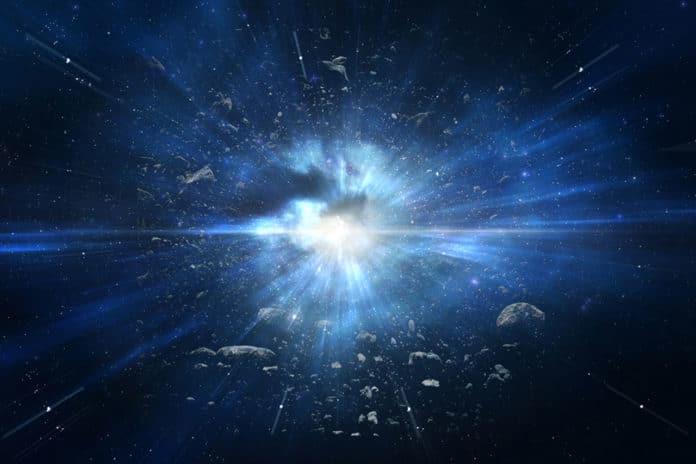Immediately after the big bang, the very first gravitational waves emerged. These primordial gravitational waves still echo through the universe today. They are drowned out by the crackle of gravitational waves produced by more recent events, such as colliding black holes and neutron stars.
LIGO and other gravitational-wave detectors detect gravitational waves regularly. Unlike other gravitational-waves, primordial gravitational signals are several magnitude fainter orders than what these detectors can register.
MIT scientists have now developed a method to detect the very faint signals of primordial ripples from gravitational-wave data.
Sylvia Biscoveanu, a graduate student in MIT’s Kavli Institute for Astrophysics and Space Research, said, “If the strength of the primordial signal is within the range of what next-generation detectors can detect, which it might be, then it would be a matter of more or less just turning the crank on the data, using this method we’ve developed. These primordial gravitational waves can then tell us about processes in the early universe that are otherwise impossible to probe.”
To develop this new method, scientists relied on a model that describes the more obvious “conversations” of the astrophysical foreground. The model predicts the patterns of gravitational wave signals created by the merging of astrophysical objects of different masses and spins. The team used this model to create simulated data of gravitational wave patterns, of both strong and weak astrophysical sources, for example, merging black holes.
Scientists then tried characterizing every astrophysical signal lurking in these simulated data to identify the masses and spins of binary black holes.
These boundaries are simpler to distinguish for louder signs and just weakly compelled for the mildest signs. Previous strategies only use a “best guess” for each signal’s parameters to take away it out of the data. Unlike this, the new method represents the uncertainty in each pattern characterization. It is hence ready to recognize the weakest signals’ presence, regardless of whether they are not well-characterized.
Biscoveanu says this ability to evaluate uncertainty helps the specialists avoid any bias in their measurement of the primordial background.
Once they identified such distinct, nonrandom patterns in gravitational-wave data, they were left with more random primordial gravitational-wave signals and instrumental noise specific to each detector.
Scientists tested a new method by first simulating 400 seconds of gravitational-wave data, which they scattered with wave patterns representing astrophysical sources such as merging black holes. They additionally infused a signal throughout the data, like the persistent hum of a primordial gravitational wave.
They then split this data into four-second segments and applied their method to each segment to see if they could accurately identify any black hole mergers and the pattern of the wave that they injected. After analyzing each segment of data over many simulation runs and varying initial conditions, they successfully extracted the buried, primordial background.
Biscoveanu said, “We were able to fit both the foreground and the background at the same time, so the background signal we get isn’t contaminated by the residual foreground.”
Biscoveanu hopes that once more sensitive, next-generation detectors come online, the new method can be used to cross-correlate and analyze data from two different sensors to sift out the primordial signal.
The results of this study are published today in Physical Review Letters.
